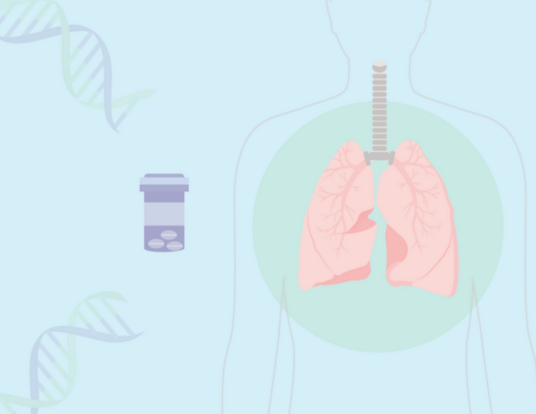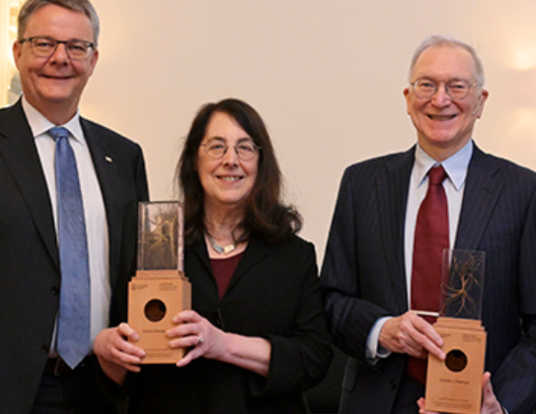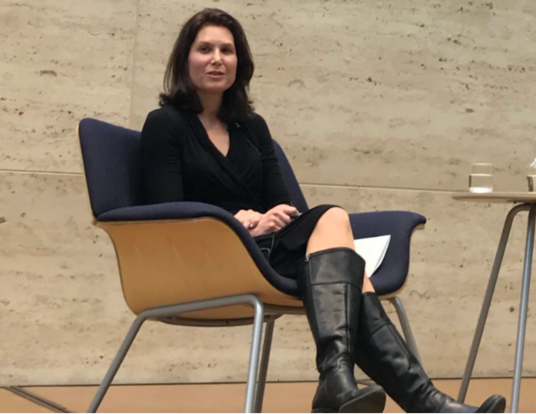Longevity for Humanity
Inspired by human connections, Adebanjo Adedoja studies how to make life longer
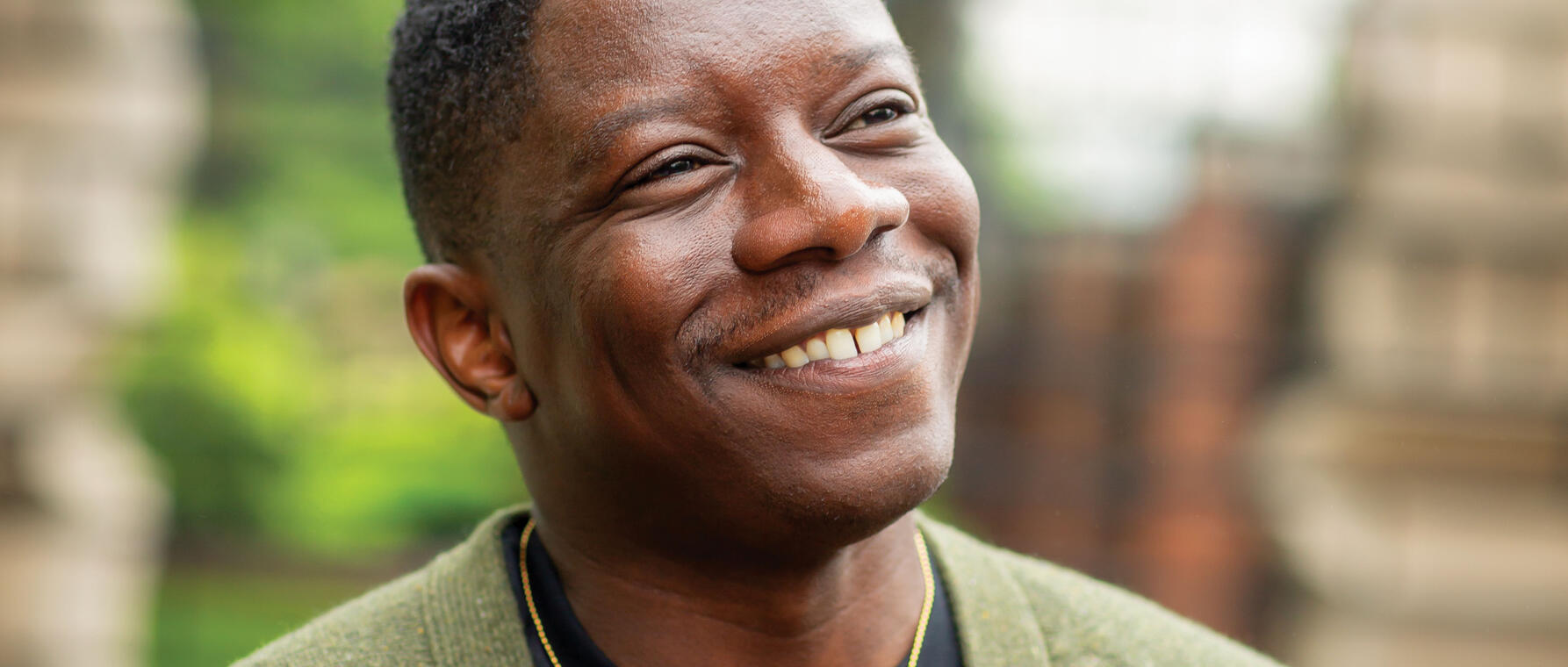
Working late in the lab of Harvard Medical School (HMS) Professor Alex Soukas at Massachusetts General Hospital, the molecular biologist Adebanjo Adedoja befriended one of the custodial staff who came through to clean up every night. The man, a migrant from Guatemala, wasn’t fluent in English. Having grown up in Lagos, Nigeria, Adedoja spoke no Spanish. Yet the two found ways to communicate, joking around and sharing a deeply human connection.
One day, the custodian arrived with a surprising question: “What is cancer?” Adedoja did his best to distill the basics: DNA, genetics, uncontrolled cell division. “Can it happen to people who don’t smoke?” Yes, Adedoja said. We can do everything right for our health, but sometimes things in our bodies just go wrong. The custodian nodded. It wasn’t until months later that he finally pulled Adedoja aside to confide in him: His wife had the disease.
Four months later, the man’s wife died in hospice. In the weeks afterward, Adedoja spoke often with his friend on the phone. He brought food. He sat with him quietly, met his kids, and learned so much about his friend’s wife that Adedoja felt he knew her. In doing so, he came to understand at a deeper level the importance of his PhD work. “It reminded me that science doesn’t end in the lab,” he says. “It’s not just down to studying cells and designing adequately controlled experiments. There’s a whole humanity behind the research that we do. We have to keep that in mind and connect with people in that way.”
A May 2025 graduate of Harvard Griffin GSAS with a PhD in biological and biomedical sciences, Adebanjo Adedoja’s connection with people is always top of mind. Though much of his research focuses on the cells of tiny organisms, his friend’s loss reminds him that it bears on one of humanity’s great concerns: how to live a longer, healthier life.
Stressing Longevity
In the Soukas Lab, Adedoja studies mitochondria dysfunction in the context of aging. Often referred to as the “powerhouse” of a cell, mitochondria are organelles that produce adenosine triphosphate (ATP), the “fuel” burned to drive the functions of cells, organ systems, and, ultimately, whole organisms.
On the outer membrane of mitochondria sit voltage-dependent anion selective channels (VDACs). VDACs act a little like the holes in a colander or sieve, allowing metabolites and ATP to travel back and forth between mitochondria and the cytoplasm of a cell. Adedoja wanted to know how the workings of mitochondria—and, by extension, the lifespan of an organism— are impacted when the function of VDACs are disrupted. He thought the question was pretty straightforward.
“Famous last words,” he laughs. “I’m trying to understand a very tiny part of a system that produces a lot of energy and is involved in several parts of cellular function.”
To the extent that the problem had been studied in the past, the verdict was that the large-scale disruption of VDAC function would devastate an organism. “Work from as far back as 2006 shows that in mammalian cells, when VDACs are really high, it’s bad, and when they’re really low, it’s bad.”
To test this assumption, Adedoja worked with Caenorhabditis elegans (C. elegans), a tiny roundworm often used in biological research. Through RNA interference and also the use of CRISPR-Cas9 gene-editing technology, he reduced by five fold the number of VDAC proteins functionally present on the worms’ outer mitochondrial membrane—a huge decrease, but not enough to kill the organisms. The result was . . . no difference in longevity compared to the control group.
Their offspring, however, were a different story.
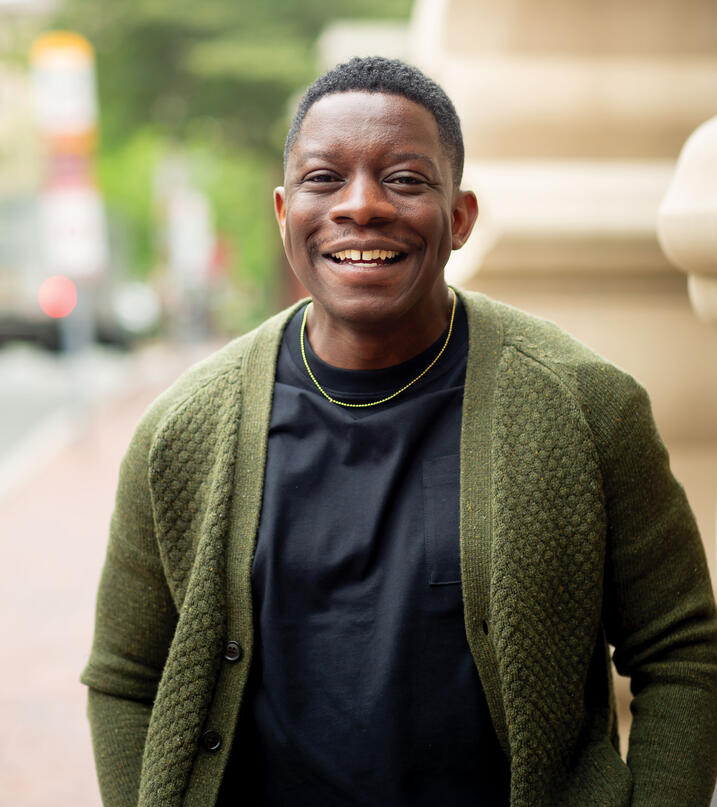
“I took the progeny from those worms that already had reduced VDAC levels,” Adedoja explains. “I collected their eggs, synchronized them with controls, and tracked the second generation. That’s when I saw the phenotype.”
C. elegans usually have a lifespan of about three weeks. But, across three different replicates, Adedoja observed that the progeny of worms that had undergone VDAC disruption lived on average about 30 percent longer than those in the control group. The results were so startling that Adedoja had a hard time believing they were correct. “I repeated the experiment again and again, thinking, ‘Well, maybe I haven’t mastered the counting technique yet. Maybe it was just a fluke and another replicate will completely disprove my results.’ But when they were confirmed after the fourth, fifth, and sixth experiment, I started to think, ‘Maybe I’m running out of excuses here. This is actually happening.’”
Adedoja says that the longer lifespan is a product of the mitochondrial stress response. “In some cases, when the conserved mitochondrial stress pathway is activated in C. elegans, it has some beneficial effects that show up as increased lifespan,” he says. “The worms live longer. I was able to tie VDAC reduction to this stress response. In the end, I identified three new potential regulators of the stress response pathway that not only applied to stress from reduced VDAC but also to other genetic or chemical causes of mitochondrial stress. These regulators are conserved in humans, too.”
Professor Soukas, Adedoja’s PhD advisor, says that scientists have known for decades that mild disturbances in mitochondrial function trigger healthy stress defenses, promoting longevity and healthy aging. Inducing mitochondrial stress has been proposed as an approach to treating various mitochondrial, neurodegenerative, cardiac diseases, and cancer. But, Soukas says, there are still important aspects of mitochondrial stress defenses that remain uncovered.
“Banjo identified an entirely new set of genes and molecules that are absolutely required for activating stress defenses and, correspondingly, for promoting lifespan extension in response to mild mitochondrial stress.”
Adedoja’s new data provides a way to activate some of the downstream health benefits of mitochondrial stress without disrupting the mitochondria—a potential first step in identifying new ways of reducing age-related diseases, including Parkinson’s, Alzheimer’s, heart disease, and cancer. “We are presently unable to activate these favorable defenses, because humans can’t tolerate disruption of mitochondrial function,” Soukas says. “Banjo’s work provides a new way for us to design strategies to promote healthy aging, bypassing the need to disrupt the mitochondria themselves. It’s exciting to think that we could target dozens or even hundreds of age-related conditions by the discoveries made during his doctoral studies.”
It’s not just down to studying cells and designing adequately controlled experiments. There’s a whole humanity behind the research that we do. We have to keep that in mind and connect with people in that way.
—Adebanjo Adedoja
Nursing an Interest in Science
Adedoja credits his interest in biology to his mother, a nurse, or at least to her books. Growing up in Nigeria, he would often page curiously through her nursing school texts in between—and sometimes instead of— doing his chores. He was particularly drawn to one titled, Where There Is No Doctor.
“It’s basically just home remedies and things that you can do to treat patients when the nearest medical facility is one or two hours away,” he says. “It’s geared toward African countries, and there’s information about everything from childbirth to diarrhea. I thought it was the most interesting thing. ‘Here’s how to make an electrolyte solution,’ or ‘If you see this symptom, don’t even bother trying to do anything at home. Go to the hospital.’”
Adedoja found the subtext of the book as compelling as the science. “It was the fact that people didn’t have access to care,” he says. “I thought, ‘Wow, that’s insane. There are a lot of people around me who don’t have access to all this.’”
The inequities in healthcare were on display in West Africa, where infectious disease was a major concern. “Malaria was something that most of us got,” he says. “You might hear of people dying from it. ”
The experience heightened Adedoja’s interest in “these invisible tiny things that could be making us really sick.” He originally planned to go to medical school, but then realized his interest was more closely aligned with research in microbiology.
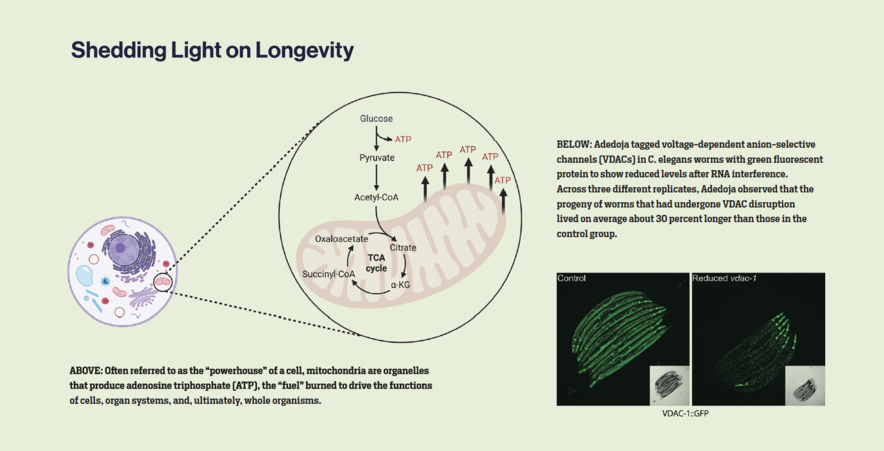
“I wanted to learn about these microbes that were shaping the environment of the countries around me,” he says.
After traveling to the US for a bachelor’s and master’s degree in biology at the University of Louisiana, Monroe, Adedoja enrolled at Harvard Griffin GSAS. He thought he might study the infectious diseases that had partially inspired his interest in science. After rotating through several labs, exploring topics of interest, however, he decided to venture into a new field and join the Soukas Lab to study the science of metabolism and healthy aging.
“It was hard,” he says. “I had to learn a lot about metabolism, new experimental systems, and other things. The curve was very steep. But I did learn a lot at the end of six years, and I am grateful for what I got out of it.”
It’s also been hard to be so far from home for so long. “In 2015, I went back after graduating from college,” he remembers. “My brother was graduating from high school, and there was a procession of graduating students. I found myself crying and thinking, ‘What is this?’ It was a sense of loss. I hold my siblings close to my heart and I had missed a significant chunk of my brother’s life.”
Banjo identified an entirely new set of genes and molecules that are absolutely required for activating stress defenses and, correspondingly, for promoting lifespan extension in response to mild mitochondrial stress.
—Professor Alexander Soukas
Showing Up for People
Adedoja’s need to experience and foster closeness has translated to volunteer work in an impressive range of groups during his time at Harvard Griffin GSAS: the Biological and Biomedical Sciences Peer Mentor Program, Families for Depression Awareness, the Harvard Coalition for Black Lives, Skip the Small Talk, Community Cooks, and the Eighth Grade Science and Engineering Showcase. Now that he has graduated, Adedoja hopes to bring together his passions for science and for community by working in external relations for a healthcare- or science-related organization.
“The field of medical affairs and communications is top of the list for me, but I’m also interested in public affairs,” he says. “Patient advocacy for health equity goes back to my early interests, the foundational ones that drew me to Where There Is No Doctor. I would like to be in a position where I can go back and forth between the spaces with my scientific expertise and also translating for the community, where you need to focus on building relationships, credibility, and partnerships just by showing up for people and listening.”
Wherever his academic and career journey leads, Adedoja says he will carry with him the desire to make life better for those everyday people like his Guatemalan friend and his late wife.
“That experience showed me that, no matter where I go in life, I should pay attention to the people who are in the background,” he says. “It reminds me that there are always people who you may not see directly, who are not on the front lines doing the big, shiny stuff, but are just as important.”
Banner photo by Kathleen Dooher
Get the Latest Updates
Join Our Newsletter
Subscribe to Colloquy Podcast
Simplecast



